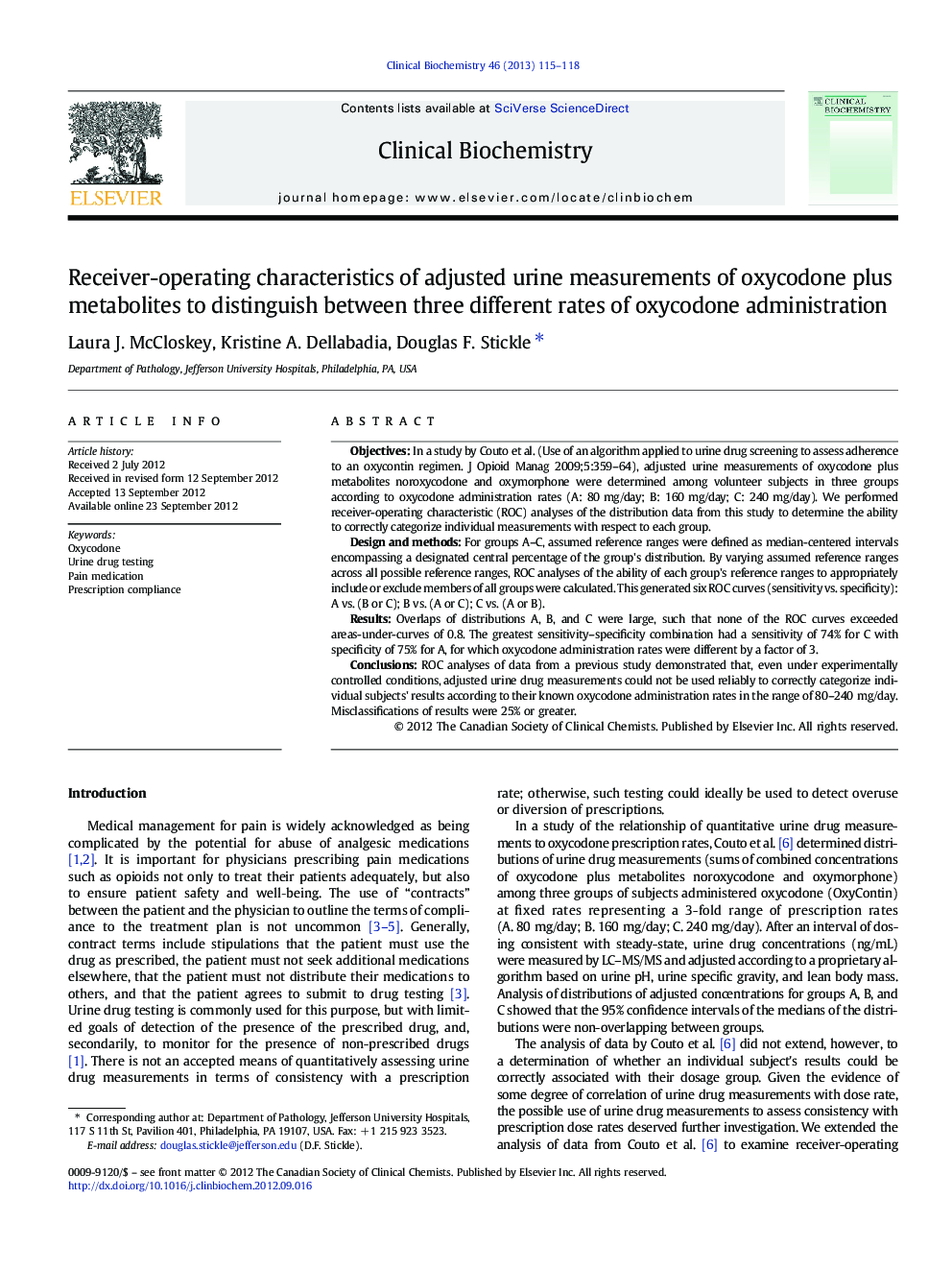| Article ID | Journal | Published Year | Pages | File Type |
|---|---|---|---|---|
| 1968958 | Clinical Biochemistry | 2013 | 4 Pages |
ObjectivesIn a study by Couto et al. (Use of an algorithm applied to urine drug screening to assess adherence to an oxycontin regimen. J Opioid Manag 2009;5:359–64), adjusted urine measurements of oxycodone plus metabolites noroxycodone and oxymorphone were determined among volunteer subjects in three groups according to oxycodone administration rates (A: 80 mg/day; B: 160 mg/day; C: 240 mg/day). We performed receiver-operating characteristic (ROC) analyses of the distribution data from this study to determine the ability to correctly categorize individual measurements with respect to each group.Design and methodsFor groups A–C, assumed reference ranges were defined as median-centered intervals encompassing a designated central percentage of the group's distribution. By varying assumed reference ranges across all possible reference ranges, ROC analyses of the ability of each group's reference ranges to appropriately include or exclude members of all groups were calculated. This generated six ROC curves (sensitivity vs. specificity): A vs. (B or C); B vs. (A or C); C vs. (A or B).ResultsOverlaps of distributions A, B, and C were large, such that none of the ROC curves exceeded areas-under-curves of 0.8. The greatest sensitivity–specificity combination had a sensitivity of 74% for C with specificity of 75% for A, for which oxycodone administration rates were different by a factor of 3.ConclusionsROC analyses of data from a previous study demonstrated that, even under experimentally controlled conditions, adjusted urine drug measurements could not be used reliably to correctly categorize individual subjects' results according to their known oxycodone administration rates in the range of 80–240 mg/day. Misclassifications of results were 25% or greater.
► Published algorithm-adjusted urine drug measurement distributions were analyzed. ► Distributions were for three oxycodone dosage rate groups (80, 160, 240 mg/d). ► Receiver-operating curves to distinguish between rate groups were produced. ► Receiver-operating areas‐under‐curves between rate groups were less than 0.8. ► Misidentifications between rate groups were at least 25%.
